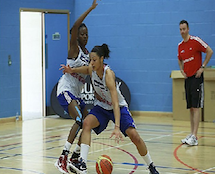README-en.md 9.6KB
[Verano 2016 - Ive- Tatiana]
Object Oriented Programming (OOP) is a programming paradigm that promotes the design of programs by having different objects interacting together to solve a problem. C++ is one of the programming languages that promotes object oriented programming, allowing programmers to create their own classes from scratch or derive them from other existing classes. Other languages that promote OOP are Java, Python, JavaScript and PHP. In OOP, each object encapsulates within itself certain properties about the entity being modeled. For example, an object that models a point encapsulates the coordinates x and y of the point being represented. Furthermore, each object allows certain actions to be carried out on itself with the methods that the object contains. For example, an object of class point could carry out the action of changing the value of the x coordinate. When an object class we need to use in our program has not been predefined in a library, we need to declare and implement our own class. To do this, we define classes that contain data with certain properties or attributes, and actions that we want to carry out with this data through the use of methods or member functions. This way, we can organize the information and processes in objects that have the properties and methods of a class. In today’s laboratory experience, you will practice defining a class and implementing some of its methods by completing a program that simulates a basketball game between two players, maintaining the score for the game and the global statistics for the two players.
Practice the implementation and declaration of classes in C++.
Implement methods in a class.
Before coming to the laboratory you should have:
Reviewed the concepts related to classes and objects.
Studied the skeleton for the program in
main.cpp.Studied the concepts and instructions for the laboratory session.
Taken the Pre-Lab quiz, available in Moodle.
The skeleton for the program that we provide simulates a basketball game between two players. The successful throws into the basket receive two points. The data is initiated with the name of each player and the global statistics in the “tournament”: total of games played, attempted throws, successful throws and rebounds. The program includes random functions and formulas to determine the player that attempts a throw, if the player scores, and the player that takes the rebound. During the simulated game the score for each player is kept and each player’s data is updated. At the end of the game, a table with the statistics is displayed.
The algorithm that simulates the game is the following:
1. initialize the player
2. assign jugadorEnOfensiva randomly
3. while (none has won)
4. simulate a shot to the basket
5. if (scored)
6. update the statistics of the player that shot the basket
7. if (the score >= 32):
8. inform that the offense player (jugadorEnOfensiva) won
9. else:
10. exchange offensive player
11. else:
12. update statistics of the player that shot the basket
13. determine who gets the rebound
14. update the statistics of the player that got the rebound
15. assign a player in offense (jugadorEnOfensiva)
16. show the players statistics
For this laboratory experience, you will define the BBPlayer class that contains the attributes and methods that are described below. Since some of the functions that are already defined in the provided code use attributes and methods of this class, it is important that you use the same names that we indicate. The commented code in the main function and in test_BBPlayer will help you determine the type of data the method should return, the types the parameters should have, and the order in which they are included in the function declaration.
_name: stores the name of the player_shotsTaken: stores the number of attempted throws during the tournament_showsMade: stores the number of throws scored during the tournament_gamesPlayed: stores the number of games played during the tournament_rebounds: stores the number of rebounds during the tournament_score: stores the player’s score during the game
- default constructor. (method included in
main.cpp) setAll(): method that assigns an initial value to all of the attributes of the object. Notice that this method is invoked at the beginning ofmainto assign initial values to the arrayPthat is an array of two objects of theBBPlayerclass.name(): method to acquire the name of the player.shotPercentage(): method to compute the percent of throws scored; is used to determine if the attempted throw is scored by a player. (method included inmain.cpp)reboundsPerGame(): method to compute the average number of rebounds caught by a player; is used to determine if the player successfully catches the rebound. (method included inmain.cpp)shotMade(): method that registers that a shot was scored, that a shot was attempted, and updates the score for the player.shotMissed(): method that registers an attempted throw (but unsuccessful).reboundMade(): method that registers that a rebound was caught.addGame(): method that registers that a game was played.score(): method to acquire the score of a player.printStats(): method that displays a player’s statistics. (method included inmain.cpp)
!INCLUDE “../../eip-diagnostic/basket/en/diag-basket-01.html”
!INCLUDE “../../eip-diagnostic/basket/en/diag-basket-02.html”
In this laboratory experience, your task will be to define the BBPlayer class with the attributes and method prototypes listed above. The skeleton for the program includes the code to define some of the methods; others you will have to be define.
The skeleton for the program also includes the test_BBPlayer function that does unit tests to each of the functions in the program. The tests are commented and, as you define each function, you will remove the comments, test and modify the function, until the test for that function is passed. Once all of the functions are ready and have passed the tests, the whole program is tested by removing the necessary comments in the main function.
Load the project
basket01intoQtCreator. There are two ways to do this:- Using the virtual machine: Double click the file
basket01.prolocated in the folder/home/eip/labs/classes-basket01of your virtual machine. - Downloading the project’s folder from
Bitbucket: Use a terminal and write the commandgit clone http:/bitbucket.org/eip-uprrp/classes-basket01to download the folderclasses-basket01fromBitbucket. Double click the filebasket01.prolocated in the folder that you downloaded to your computer.
- Using the virtual machine: Double click the file
This program will run on the terminal and you should select this option from the “Projects” window. To access this window, you select “Projects” in the vertical menu to the left. Afterwards, in
Build & Runyou selectRunand then mark the box that saysRun in terminal.Study and understand the code in the
main.cppfile, including the code that is commented.
Define the
BBPlayerclass with the specifications included above. For each one of the methods that are specified above:a. Include a prototype for the method in the class definition.
b. If the corresponding member function is already coded in the program, remove the comments from the corresponding sections for this function in
test_BBPlayer.c. If the corresponding member function is not coded, define the function and then remove the comments from the corresponding sections for this function in
test_BBPlayer.d. Run the program and verify that it passed all of the tests. You should obtain a window similar to the one in Figure 1. If your code does not pass all the tests, revise your code. Repeat until your code has passed all of the tests.
Figure 1. Example of the window you should obtain if the code passes the unit tests.
Once you have all of the functions defined and tested, uncomment the code in the
mainfunction to test the whole program. If the program functions correctly, you should obtain a window that starts similarly to the one in Figure 2 and finishes like the one in Figure 3.
Figure 2. Example of the start of the window you should obtain if the program functions correctly.
Figure 3. Example of the window you should obtain at the end of the program if it is working correctly.
IMPORTANT: You SHOULD NOT make any changes in the
mainandtest_BBPlayerfunctions, aside from removing the comments.
Use “Deliverable” in Moodle to hand in the main.cpp file. Remember to use good programming techniques, include the name of the programmers involved, and document your program.
[1] http://www.telegraph.co.uk/sport/olympics/basketball/9348826/London-2012-Olympics-Temi-Fagbenle-in-Team-GB-womens-basketball-squad.html
[2] http://www.musthavemenus.com/category/bar-clipart.html
[3] http://basketball.isport.com/basketball-guides/finding-your-niche-in-basketball






